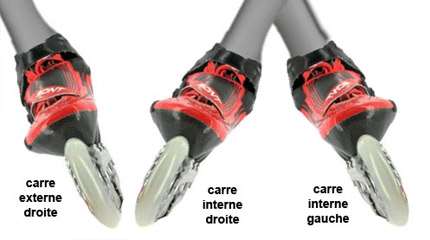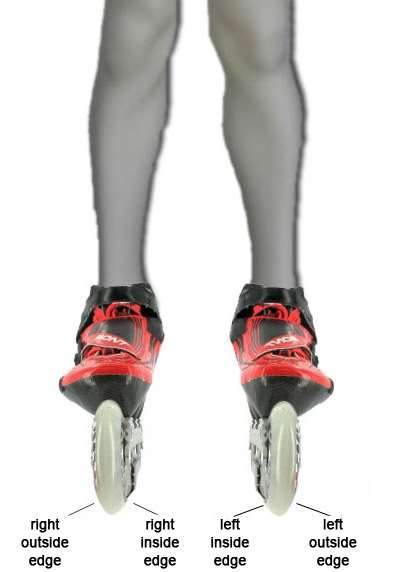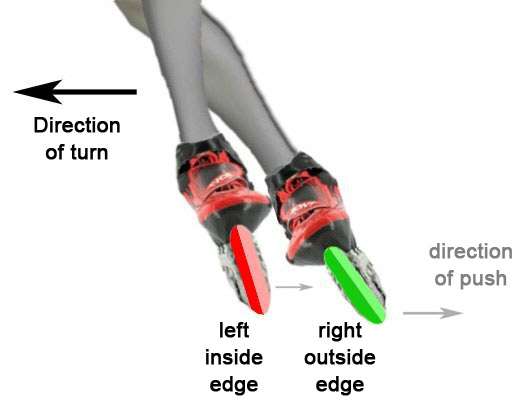Basics: Using your edges in inline skating
In inline skating, just like in skiing and ice skating, you successively shift from one edge to the other when you skate... But what is an edge? Definition...
Par alfathor

Play with your edges

It is hard to talk about skating technique without using the word « edge ». Although the use of that word concerning inline skating may sometimes seem abusive, the similarity of technique with ice skating has it that the word has passed into coaches and skaters’ common language.
In ice skating, the outer side of the blade stands for the edge. As for inline skating, the edges are the outer and inner sides of the wheels.
Skating on one edge will draw a circle on the ground. Putting your weight on an edge will make you turn if your body leans at the same time.
There are 4 edges (even 8 if you count the back and front):
- left outside edge
- right outside edge
- left inside edge
- right inside edge
The inside edges
The inside edges are placed in-between your feet. They are the most commonly used in inline skating and they are called upon at each push.
Skating beginners often lean on their inside edges to rest (a bad habit that should be gotten rid of!)
The outside edges
The outside edges are placed to the outer sides of your skates. They are mainly used during turns when you lean towards the inside of the curve.
They are used a lot in artistic and slalom skating, but also in speed skating for cross-overs and double push.
The neuter edges
‘Neuter edges’ refer to when the wheels are at 90 degrees, resting on the middle edge, neither on the inside nor the outside edge.
At rest, if you stand up straight and the frames are well set-up, the skates naturally get into that position.
If it is not the case, check:
- the good tightening of your skates (a skate that is not tightened enough leaves too much freedom to the foot which may roll towards the inside or the outside).
- the setting up of the frame (a frame that is too much on the inside or too much on the outside will call upon your ankles and make your feet rest on the outside or the inside edge).
- that the position does not come from your morphology (knees to the inside or outside, lack of tone in the ankles, pronation, supination…)

The use of the outside and inside edges: the example of the cross-over turn
 During a cross-over turn, the skater uses both the outside and the inside edges, alternatively or simultaneously.
During a cross-over turn, the skater uses both the outside and the inside edges, alternatively or simultaneously.
When the legs are crossed, the skater simultaneously pushes on:
- the inside edge of the inside foot to the turn
- the outside edge of the outside foot to the turn
Thus, one may say that crossing over in bends is a form of double push.
Links
Strenghten your ankles for a better practice
The double push: the ultimate skating technique?
Translation: Chloé Seyres
